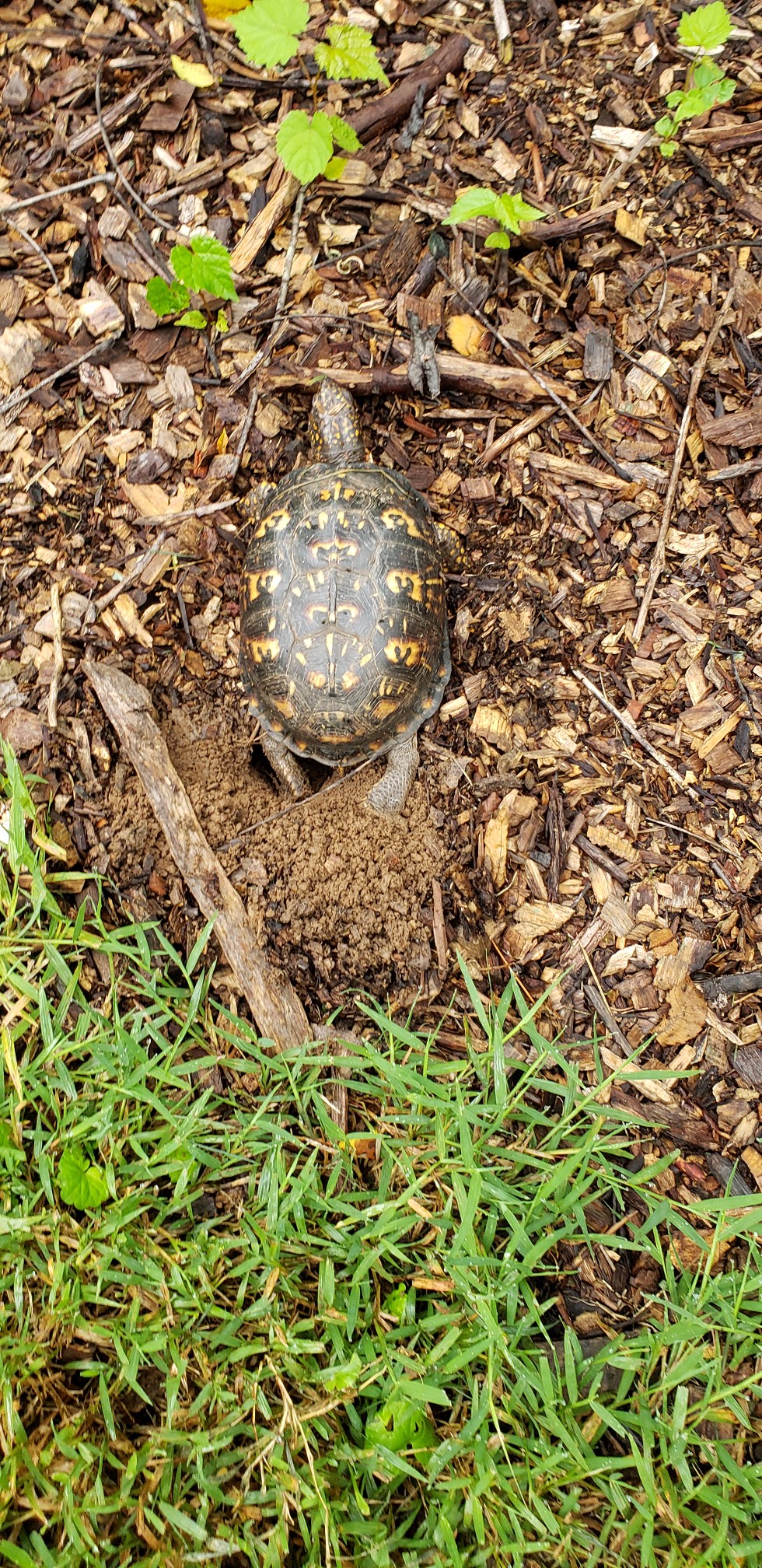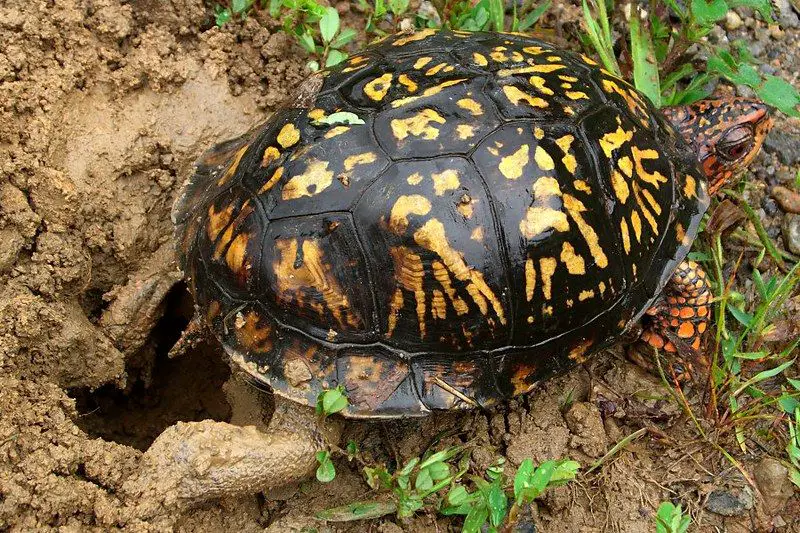Box turtles lay eggs by digging a hole in the ground with their hind legs and laying their eggs inside. Box turtles are fascinating creatures known for their unique characteristics and behaviors.
One such behavior is their ability to lay eggs. Box turtles, like other reptiles, reproduce by laying eggs. However, unlike some other reptiles, box turtles do not lay their eggs in water. Instead, they dig a hole in the ground with their hind legs and lay their eggs inside.
Box turtles can lay up to six eggs at a time, and the eggs will hatch after about 70 to 80 days. We will explore the fascinating process of how box turtles lay eggs and the factors that affect their reproductive success. So, let’s dive in!
Box Turtle Reproduction
Box turtles are fascinating creatures known for their unique reproductive process. Understanding how box turtles lay eggs and reproduce is essential for their conservation and understanding their life cycle.
Mating Habits Of Box Turtles
Box turtles typically mate in the spring and early summer. During mating, the male box turtle will engage in a courtship ritual to attract a female. This may involve head bobbing, circling, and biting the female’s shell. Once the female is receptive, mating occurs, and fertilization takes place internally.
Fertilization Process In Box Turtles
After mating, the female box turtle will store the sperm until she is ready to lay eggs. This can occur several months after mating. When the eggs are ready to be laid, the female will find a suitable nesting site, usually in sandy or loamy soil. She will then dig a hole with her hind legs and deposit a clutch of eggs, typically ranging from 3 to 8 eggs, depending on the species. The eggs are left to develop and hatch on their own, without any parental care from the mother.

Credit: www.flickr.com
Egg Formation
Box turtles, like other reptiles, reproduce through the laying of eggs. The process of egg formation is crucial to understand the reproductive behavior of these fascinating creatures. In this section, we will delve into the development of eggs in box turtles and the factors influencing egg production.
Development Of Eggs In Box Turtles
Box turtles begin the process of egg formation through the development of ovarian follicles. These follicles gradually mature and ovulate, releasing the eggs into the oviduct. As the eggs travel through the oviduct, they undergo the process of fertilization if mating has occurred. The eggs then develop a calcareous shell and are eventually laid by the female box turtle.
Factors Influencing Egg Production
- Diet: A nutritious and balanced diet is essential for egg production in box turtles. Calcium and other essential nutrients play a crucial role in the formation of healthy eggs.
- Temperature: The ambient temperature can significantly impact the reproductive behavior of box turtles. Warm temperatures are conducive to egg development and incubation.
- Health and Age: The overall health and age of the box turtle can influence its ability to produce eggs. Healthy and mature turtles are more likely to lay eggs successfully.
Nesting Behavior
Box turtles, like many reptiles, exhibit fascinating nesting behavior. From the selection of the nesting site to the preparation of the nest, each step in the process is crucial for the survival of their offspring.
Selection Of Nesting Site
Box turtles meticulously choose their nesting sites. They typically prefer areas with loose, well-drained soil and ample sunlight. This allows the eggs to develop properly and ensures the hatchlings have an easier time emerging from the ground. Additionally, they tend to select locations that provide protection from predators, such as under shrubs or in secluded spots within their habitat.
Preparation Of The Nest
Before laying their eggs, box turtles carefully prepare the nest site. They use their powerful hind legs to excavate a hole in the ground, often digging to a depth of 4 to 7 inches. Once the hole is ready, they create a chamber by compacting the soil at the bottom. This chamber serves as a secure space for the eggs, shielding them from the elements and potential threats.

Credit: ivycreekfoundation.org
Egg Laying Process
Box turtles are fascinating creatures known for their unique egg laying process. Understanding the Egg Laying Process of box turtles can provide valuable insights into their lifecycle.
Timing Of Egg Laying
- Box turtles typically lay eggs in the spring or early summer months when the weather is warm.
- Females usually choose a suitable nesting site in sandy soil or loose substrate to lay their eggs.
Egg Deposition
- After selecting a nesting site, the female box turtle digs a hole using her hind legs to deposit the eggs.
- The number of eggs laid by a box turtle can vary but usually ranges from 3 to 8 eggs per clutch.
Incubation Period
Incubation Period: The incubation period of box turtle eggs is a crucial stage in their development.
Protection Of Eggs
Box turtles bury their eggs in the ground to protect them from predators and environmental factors.
Duration Of Incubation
The incubation period for box turtle eggs can range from 60 to 90 days, depending on the temperature and humidity levels.

Credit: boxturtlesite.info
Hatching
When it comes to hatching, box turtles have a fascinating process that takes place over several weeks. Understanding the signs of approaching hatching and knowing when assistance is needed for hatchlings can help ensure the survival of these young turtles.
Signs Of Approaching Hatching
Box turtle eggs typically take around 60 to 90 days to hatch. As the hatching date approaches, the eggs may start to slightly collapse and develop a dimple. This is a sign that the embryos are preparing to hatch. Additionally, you may notice small cracks appearing on the surface of the eggs as the hatchlings begin to break through the shell.
Assistance Needed For Hatchlings
In some cases, hatchlings may require assistance to fully emerge from their eggs. If a hatchling is struggling to break free or has only partially emerged, you can carefully use a damp cotton ball to gently moisten the eggshell and provide some assistance. However, it’s essential to be extremely gentle to avoid causing harm to the hatchling.
Conclusion
Understanding how box turtles lay eggs provides insight into their fascinating reproductive process. By creating a suitable nesting site, female box turtles ensure the survival of their offspring. This natural behavior highlights the importance of protecting these unique creatures in their natural habitats.
Observing this process can deepen our appreciation for the wonders of nature.





Leave a Reply